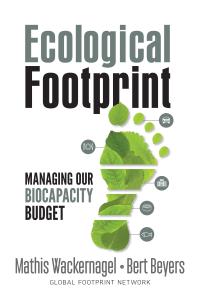| Author(s) | |
|---|---|
| Publisher | |
| Publication Year |
Ecological Footprint
Managing Our Biocapacity Budget
Our economy is running a Bernie Madoff-style Ponzi scheme with the planet. We use future resources to run the present, using more than Earth can replenish. Like any such scheme, this works for a limited time, followed by a crash. Avoiding ecological bankruptcy requires rigorous resource accounting — a challenging task, but doable with the right tools. Ecological Footprint accounting, first introduced in the 1990s and continuously developed, continues to be the only metric that compares overall human demand on nature with what our planet can renew — its biocapacity — and distils this into one number: how many Earths we use. Ecological Footprint provides a complete introduction, covering: Footprint and biocapacity accounting; Data and key findings for nations; Worldwide examples including businesses, cities, and countries; Strategies for creating regenerative economies. Whether you’re a student, business leader, future-oriented city planner, economist, or have an abiding interest in humanity’s future, Footprint and biocapacity are key parameters to be reckoned with and Ecological Footprint is your essential guide.
Contributors
Mathis Wackernagel
Mathis Wackernagel is co-creator of the Ecological Footprint and president of Global Footprint Network. Recipient of numerous awards, he has lectured at more than a hundred universities and is author or contributor to over one hundred peer-reviewed papers, articles, reports, and books including the bestselling Our Ecological Footprint. He lives in Oakland, California.
Bert Beyers
Bert Beyers, born in Mönchengladbach, Germany, is a senior editor at the Norddeutscher Rundfunk in Hamburg. For several decades, questions of ecology and future have been his professional passion. He has published widely including a book with Franz Josef Radermacher on survival in the 21st century entitled Welt mit Zukunft: Die ökozoziale Perspektive. He lives in Hamburg, Germany.







